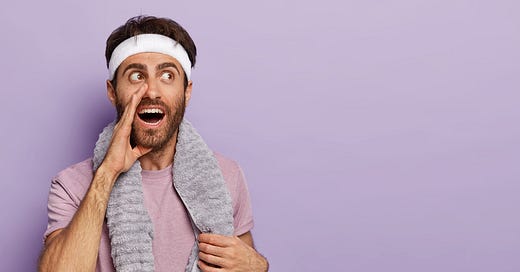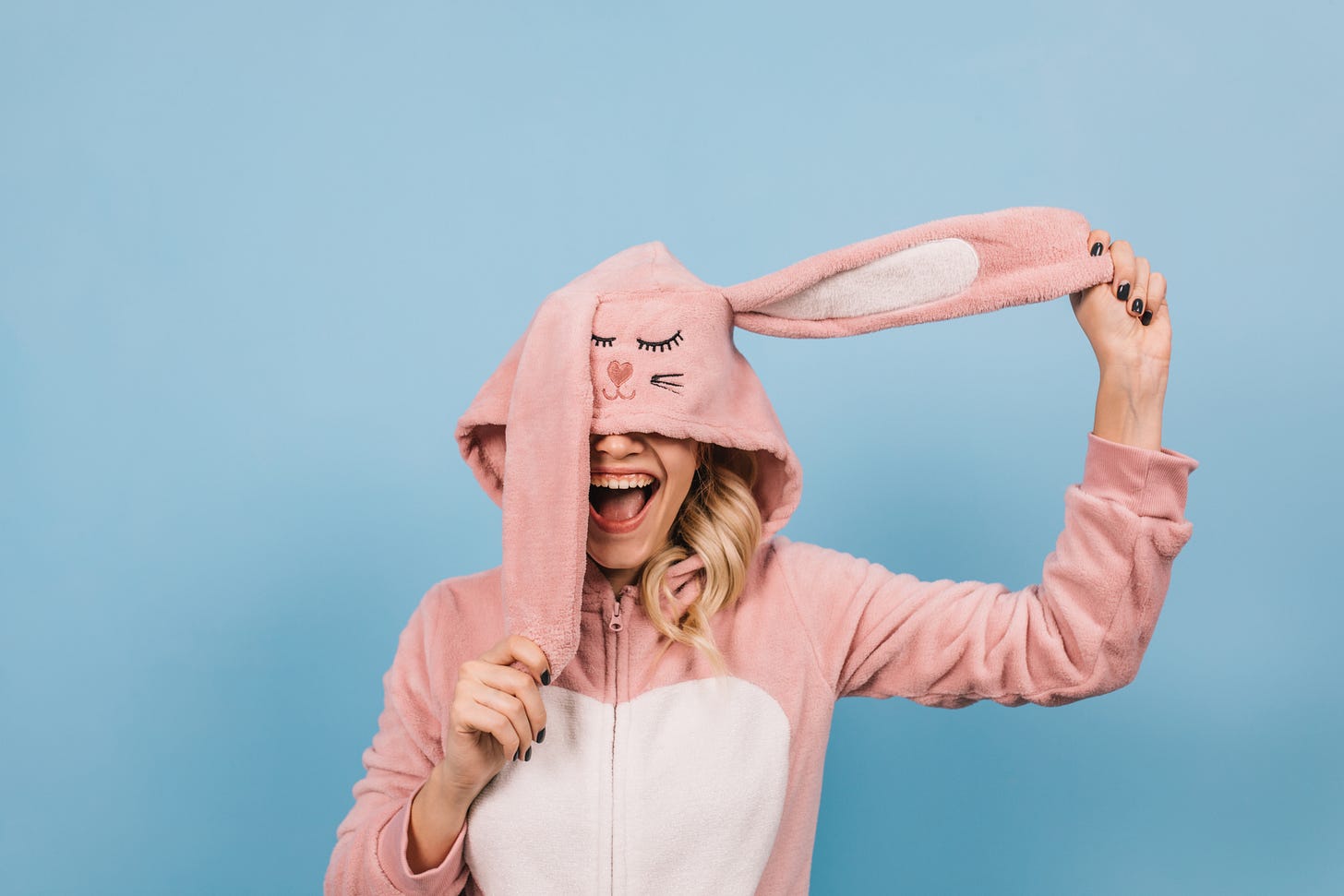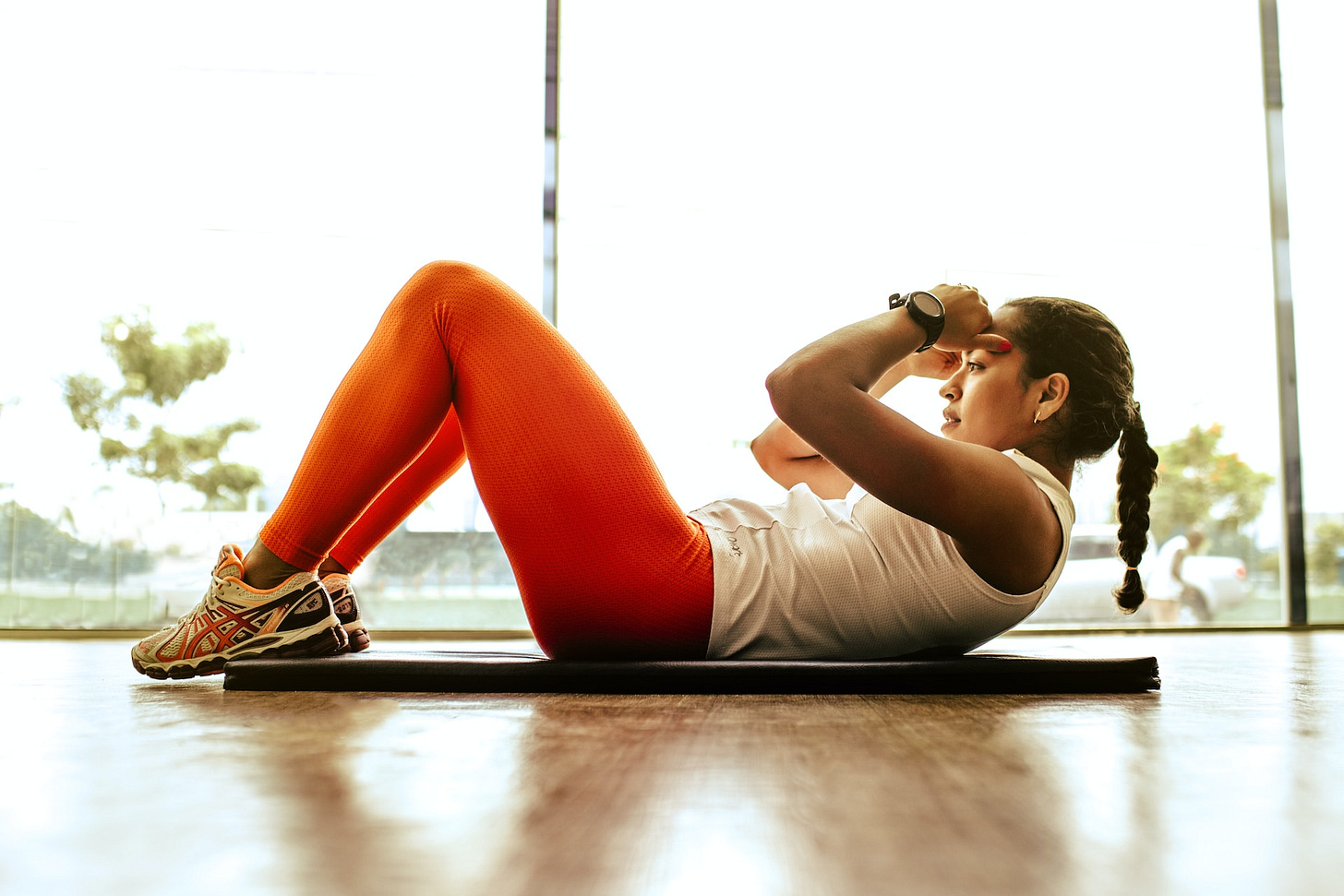Welcome to The Feel Good Life! A newsletter about health, prevention, empathy, and hope. I’m Dr. Mariana and you have just arrived to my practical and medically-guided course on managing stress. (To get started with the course, go here.)
Hello! Welcome to Lesson 7
Let’s jump right in!
In our previous lesson we talked about sleep and sleep deprivation, while taking a deep dive on how these patterns can affect longterm health, and how you can start fixing your own sleep issues.
We also took an extra step as you embraced the challenge to create a habit from scratch, using the tools you have learned so far in this course. That’s amazing work! I’m proud of you.
Today we will continue our journey by adding some physical activity into the feel good formula. I’ll also show you the connection between muscle work and hormones, and how this team work impacts pretty much everything in your body. Ready? Let’s go!
In today’s lesson:
Exercise? No way Jose!
A Few Minutes Go a Long Way & The Happy Hormones
Challenge #7: The Kettle Workout
Exercise? No Way Jose!
Today, I'm going to show you how to start getting healthy by doing as little physical activity as possible.
(It's true - I'm the most awesome doctor EVER.)
But first - at the end of last lesson, I promised that I'd give you a few of my own suggestions for building a habit that makes you go to bed at the right time.
And because we have now understood the 3 components of the magic formula to habit making (Trigger, Habit, Reward), I’m going to show you exactly how this looks like when applied to actual habit-making.
Say hello to my Top 3 Sleep Habit-Making suggestions explained:
EXAMPLE #1: CUT THE LIGHTS
Like we learned here, bright lights stimulate the brain, slowing down Melatonin production - the substance in your brain in charge of getting you ready to sleep. So, creating a habit to reduce bright lights and screen time would look something like this:
TRIGGER - Sunset. It gets dark outside.
HABIT - Don't turn the main lights on! Only turn side-lights on (eg. spot-lamps, bedside lights, etc.) Bonus points awarded for candles! EXTRA bonus points for making one of these, or just buying a $2 red lightbulb (it's blue light that's the problem when it comes to sleepiness). However you do it, allow your eyes to get used to low levels of light in the evenings, so it's much more likely you're sleepy come bedtime.
REWARD - A bowl of popcorn and an hour only of TV. The popcorn contains tryptophan, an amino acid that helps produce serotonin in your brain - which helps make you sleepy. Just keep the TV-watching down to one hour, so your brain isn't too stimulated. Ideally, screen time needs to stop 1 hour before actually falling asleep. No, you should not fall asleep with the TV on.
EXAMPLE #2: CHANGE CLOTHES
In the science of sleep, it is well known that temperature, freshness, and the right room conditions are all essential to getting a proper rest. So why not make it a habit to enjoy your fave pyjama as a way to help your brain get in rest mode?
TRIGGER - The end of dinner.
HABIT - Change into your pyjamas, dressing gown or whatever your night-attire is. Make sure it’s clean and fresh. Airing it daily, and changing it every 3 days is a healthy recommendation. Specially because we sweat more than we think when we sleep.
REWARD - Comfort! Nothing in life is comfier than pyjamas. And to make this habit extra sticky? Buy new pyjamas, the kind you absolutely can't wait to wear - and hang them up somewhere really visible, so you're constantly being reminded of them waiting for you at the end of the day. Aaaaah….pyjamas. *Happy goofy smile.*
EXAMPLE #3: TIRE YOURSELF
Now, this is a tricky one to define by Trigger/Habit/Reward, so let me explain it further instead.
What’s the best way to get to bed on time - by far?
You're physically tired.
Your bed is irresistible when you're weary. Heck, you may even go to bed early.
You get weary through physical exertion. If this is going to work, at some point during the day you need to get a bit sweaty. (Yes, that counts - but there are other things you can do.) And yes, let’s face, daily life can exhaust us already, but I don’t mean this kind of automatic tiredness…
It’s time to talk about a nasty, hateful word that you might associate with misery, suffering and guilt - and I don’t blame you for it.
What do you think of when you hear the word "exercise”?
Do you imagine self-inflicted agony, unflattering tracksuits and lycra, muscles burning with pain, pounding headaches, growing despair - and, finally, self-disgust on that inevitable morning you decide it’s all too much, turning the alarm off and going back to sleep?
Who wants that in their lives?
So, forget “exercise”. It’s too ambitious. Too miserable.
Too impossible.
Instead, we’re going to focus on the following things for a start:
Standing up
Sitting Down
Walking Around
Getting Out Of Bed In A Different Way
Picking Something Up
...and Putting it Down Again
Bending (At The Waist, At The Knees, Some Other Way)
Taking The Slightly Longer Way Round / Home
Getting Off The Bus Slightly Early
Taking The Stairs, Not The Elevator or Escalator
Changing TV Channels By Hand, Instead Of Using The Remote
Giving In To That Urge To Sneak Into An Abandoned Children’s Playground And Use The Swings
...and anything else that you almost do anyway - except not quite. But pretty close. Almost.
You don’t have to go massively out of your way to do these things. They’re not some huge disrupting shift in your daily behaviour that requires a ton of mental bandwidth. Huge disruptive shifts are useless to you, because there’s a good chance you’ll never do them, and it’s almost guaranteed you’ll never stick to them.
Instead, these activities are mind-boggling easy to do, and require almost no willpower.
Plus, none of them involve lycra.
In fact, you don’t need to buy any fancy, expensive fitness gear that you’ll probably never use.
You won’t collapse from exhaustion - and you won’t be scared of collapsing from exhaustion.
In most cases, they are quite literally “no sweat”.
And this is a really good place to start.
Instead of tiring yourself to exhaustion, let’s try simply…MOVEMENT.
There's real power here. Over time, these small activities will add up to something remarkable for your health - and most excitingly, they’ll have an immediate impact on your stress levels.
Here’s how and why. Read ahead.
A Few Minutes Go a Long Way: The Happy Hormones
Did you know that some hormones can be produced as a result of muscle contraction and physical activity? Let me explain.
Any time you physically activate yourself in any way - say, trying to unscrew the lid on a jar, or climbing the stairs, or waving a watering-can around the garden - the following happens:
You use your muscles.
Your muscles send a message to your brain, saying they require extra fuel - in this case, oxygen.
Your brain then sends a message to your heart ("SEND UR OXYGENS PLS THX").
Your heart works a little harder, and your blood is pumped a little faster, so that extra oxygen is driven to all your muscles.
That’s the big picture - but let’s look closer at how your brain responds.
“OMG!” yells your brain, “ALARM, ALARM! OKAY, OKAY, NOBODY PANIC, I’VE GOT THIS, I KNOW WHAT TO DO.”
Recognising that you’re under some kind of physical stress, your brain releases a flood of tiny proteins called Brain-Derived Neurotrophic Factor, or BDNF.
BDNF is great for your brain - in fact, many diseases (for example, Alzheimer’s) are associated with lowered levels of BDNF. When it is present in the right amount, this protein strengthens the neural pathways associated with information retention. As if by magic, you’re suddenly better at forming and retrieving memories - and that means you learn faster. Your thoughts are clearer, you don’t struggle to concentrate, and you feel an amazing sense of control of your own mind.
At the same time, your brain releases endorphins, better known as the chemicals that make you happy. These counteract the discomfort you’re feeling from exercising, cushioning you against pain and giving your mood a huuuuuuuuge lift.
Within minutes, maybe even seconds of doing something a little more energetic than usual, you feel really, really good. Ahhh yeah.
This whole process is designed to fight stress. That's literally what it's for.
It provokes a reaction that starts in your brain, the nerve-centre (literally) of your anxiety, and it floods your neural pathways with natural chemicals specifically designed to combat the effects of stress.
It’s also awesome for your productivity. The mildest form of exercise activates your brain more efficiently than just sitting in a chair and thinking as hard as you can.
It’s well-known that strenuous forms of exercise can work wonders for your creativity - just ask novelist Haruki Murakami, who wrote a book about the impact of a running habit upon his career as a novelist.
But so can less intense forms of physical movement - like going for a stroll.
If you want to use physical exercise to control your stress levels, even the tiniest exertions will help.
And the great news for anyone just starting? That’s when your health benefits the most:
"The first 20 minutes of moving around, if someone has been really sedentary, provide most of the health benefits. You get prolonged life, reduced disease risk — all of those things come in in the first 20 minutes of being active."
- Gretchen Reynolds, quoted in the New York Times.
In our next lesson, we’re going to look at how to work "non-exercise" into every corner of your life, turning small but powerful habits into an everyday workout you'll barely be aware of...
But for now? I challenge you to turn the kettle on.
Challenge #7: The Kettle Workout
Remember Challenge #5 "Claim Your Reward" - and how we added a beverage-shaped reward to the previous Challenge?
>> "Let's say you lovvvvve that first strong, sweet cup of coffee in the morning. Let's say you can't start your day without it. Ok! Perfect. Simple put that cup of coffee at the end of the Pee Challenge. You aren't allowed to have that cup of coffee until you drink that glass of water - but when you drink the water, you unlock the coffee! That's your special morning gift, to you."<<
Let's zoom in on this habit, so we can find a place to insert a new one.
Whether you prefer coffee, or black tea, or camomile, or lemon, or just warm water - you'll still need to boil the water in your kettle. If it's the standard electric type, or even a pot, it'll take between 2 and 3 minutes to boil up a cup's worth of hot water. If it's the old style, maybe a little longer.
That's usually 2-3 minutes (or more) of wasted time, right? You're looking at your phone, looking out the window...trying anything that will occupy 120 to 180 seconds of waiting around for something to go *click*.
Today, we're going to reclaim this time and put it to work!
What physical activity could you get done in 2 or 3 minutes? How about a walk round the garden, or to the end of the road and back? How about up the stairs, then down the stairs - twice? How about touching your toes ten times, trying to keep your legs straight? How about stretching your arms as high as they'll go, until you're really feeling it in your shoulders?
(Here's my personal Kettle Workout: my knees and leg muscles get stiff from too much sitting at the computer or from cold cold weather, so I lay with my back to the floor, put my legs in the air, and stretch-ch-ch those problem areas while the water boils.)
Your turn.
What are you going to get done tomorrow morning, while you're waiting for the kettle to boil?
And how about the rest of the day - every other time you use the kettle, at home or at work? What else could you get done in that time?
I challenge you to find out!
See you in Lesson 8, my people. Good job! We’re almost finished.
Hugs,
Dr. Mariana
P.S.: If there’s any question or doubt you’d like to clear about the lessons or the challenges so far, please, just hit Reply to this email or message me at thefeelgoodlife@substack.com. I’ll be right with you! :)
Image Credits: Freepik, Pixabay and Unsplash.














iMessage to my patients that I work with via a large Bariatric clinic as the concept of five minutes of something is better than no minutes of nothing. I think I’ve completed about 2500 Bariatric mental health, evaluations, and what you wrote is very good message to all of us.
Dr. Mariana,
Another very informative and useful lesson! Thank you!
Loved the suggestions for how not to stress AND get exercise at the same time. I grew up in L.A. where everything is done by car. (I drove 4 blocks to high school - don't laugh!) Haven't owned a car since moving to Japan almost 30 years ago and don't really miss it.
The reason I loved your exercise list is that for many of us, there's no time during the day to "go for a run", no money to "join a gym", or no interest in doing any kind of sport. With the list, though, movement seems manageable.
I would like to "do" more stairs (here comes the "Yes, but...") every day, I haul around stuff I need for teaching my classes, 20 lbs+, in a carryon bag with wheels. I used to carry it by hand, but that got to be hard. With that weight, stairs are not a choice except at the station if there's no elevator. But you've given me other ideas. (Can't wait to try out the swings on the nearby playground! ;-)
The one good thing I do is a series of stretching exercises I learned 40 years ago in my Aikido class here. Still doing them, and I can tell a difference when I do and don't do them.
My mother lived to the age of 100 and, although she was in a wheelchair the last few years, she was also the "cheerleader" at her assisted living facility. They had a beanbag baseball team, and she went to every game with her little pompoms and megaphone. They loved her, and it got her out and about. Using her legs, she wheeled herself backwards down the hall to the games. Talk about a role model! (Roll model? 🤣)
Thanks again for your helpful advice!